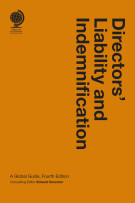Restructuring: a new approach to business failure and insolvency
08 September 2014

Author bio coming soon
International insolvency expert Professor Bob Wessels discusses the European Commission’s Recommendation.
GLB: Why are you interested in the theme of restructuring?
Wessels: In the second part of my professional career of some 40 years, I have written, taught and advised on insolvency - Dutch insolvency, but more specifically European and international insolvency. For a few years now, there have been trends in Europe towards the closer harmonisation of national insolvency laws. In March 2014 the European Commission presented its Recommendation on a New Approach to Business Failure and Insolvency. The objective is to shift the focus away from liquidation towards encouraging viable businesses to restructure at an early stage to prevent insolvency.
GLB: Can you tell a bit more about this recommendation?
Wessels: It is a non-binding instrument which contains 36 individual recommendations. The European Commission wants to give viable enterprises the opportunity to restructure and stay in business. The chosen method is to reform the national insolvency legislation of EU member states with the aim of helping viable firms to continue in business and safeguarding jobs, while simultaneously improving the situation of creditors, which will be able to recover a higher proportion of their investment than if the debtor went into formal insolvency proceedings.
The recommendation presents a minimum standard for what is called a ‘preventive restructuring framework’, which should function within the legal context and economic environment of the national market. A debtor facing the likelihood of insolvency would be able to have recourse to the restructuring framework at an early stage, without the need to formally open court proceedings. The European Commission has introduced the concept of the debtor in possession, which would retain control over the day-to-day operation of its business while it availed of the restructuring framework. Restructuring will thus become a management tool, rather than a sign of economic failure. It will be possible to obtain a court-ordered stay and bind dissenting creditors to a restructuring plan, and rules will be introduced to protect fresh money for parties that provide new finance to a debtor in accordance with the terms of a court-sanctioned restructuring plan. Such creditors should be shielded from the operation of avoidance provisions, paulian actions and so on in national insolvency law, as well as from civil and criminal liability relating to the restructuring process, except in the case of fraud.
GLB: What skills do you think today’s insolvency practitioners need?
Wessels: This is an important issue. In Europe, insolvency practitioners can be very different animals, with a variety of cultural and professional backgrounds, and considerable differences in legal and disciplinary rules regarding fairness to all interests involved and accountability. They are accountants, lawyers, corporate recovery specialists and turnaround professionals. The proposals in the recommendation demonstrate that it is necessary to develop much broader expertise in matters of insolvency law, company law or general contract law, as well as matters such financial restructuring, accounting, tax, strategy, valuation and communication.
In Restructuring and Workouts, which I am finding particularly useful, the chapter on stakeholder management provides an alternative perspective on the restructuring process: how to deal with all of these diverging interests and how to find common ground between stakeholders with conflicting agendas. From the perspective of the debtor, a restructuring process then is organised in five phases. This managerial type of approach is an interesting read for those with a legal background.
GLB: Thank you for sharing your views with us. When will the recommendation become effective?
Wessels: EU member states are invited to implement its principles within 12 months of publication (ie, before April 2015). The endgame is that 18 months after adoption of the recommendation (ie, in October 2015), the commission will assess the state of play, based on the annual reports of member states, to evaluate whether further measures to strengthen the commission policy are necessary. If the new commission, under the leadership of Mr Juncker, maintains this policy (which I would endorse), we will hear from the commission, as in many states the process of legislating takes many years. However, legislation in Germany, Spain, France and proposals in the Netherlands have used similar paint to that seen in the recommendation!
Professor Bob Wessels is emeritus professor of international insolvency law, University of Leiden School of Law, and an international legal adviser and arbitrator. He is a member of the Commission Expert Group assisting the European Commission with the revision of the Insolvency Regulation and the drafting of the Recommendation of March 12 2014 on a new approach to business failure and insolvency.














Any comments - send us an email